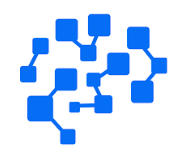What is XAI770K and why should you care?
XAI770K is an emerging class of explainable AI systems designed to bridge the gap between powerful machine learning and human-understandable reasoning. Unlike opaque models that deliver predictions without transparency, XAI770K emphasizes interpretability, traceability, and interactive decision support. If your work depends on trusting models—whether in healthcare, finance, manufacturing, or public policy—understanding XAI770K matters because it changes how decisions are made, who makes them, and how responsibly they can be acted upon.
How does XAI770K differ from traditional AI models?
- Transparency–first architecture: Traditional deep models often prioritize accuracy over interpretability. XAI770K intentionally structures models so that each step in reasoning can be extracted and presented in human-friendly terms.
- Hybrid reasoning: It combines statistical learning with symbolic rules or causal graphs. This hybrid approach helps the system not only predict outcomes but explain why a prediction was made.
- Interactive explanations: Rather than one-off feature importances, XAI770K supports iterative questioning—users can ask “what if” and receive counterfactuals and scenario analyses.
These differences make XAI770K especially valuable where stakes are high and explanations are legally, ethically, or operationally required.
What components make up an XAI770K system?
- Explainable core model: A learning engine optimized for both performance and interpretability (e.g., constrained neural nets, attention-based interpreters, or model distillation techniques).
- Causal/graph module: Represents relationships between variables as causal graphs so counterfactual reasoning and interventions are possible.
- Natural language explanation layer: Converts internal model states into human-readable rationales, often using templated or learned paraphrasing.
- User interaction interface: Dashboards or conversational agents through which users interrogate the model and receive context-rich explanations.
Together, these modules form a feedback loop: model → explanation → user query → refined model or action.
How does XAI770K improve decision-making in practice?
- Better trust and adoption: When stakeholders can see the reasoning chain, they’re more likely to adopt model outputs.
- Faster verification: Domain experts can quickly validate or contest a model’s reasoning, reducing the time needed for human-in-the-loop approvals.
- Error discovery: Transparent reasoning surfaces hidden biases, data quality issues, and unexpected correlations that opaque models hide.
- Scenario planning: Counterfactuals and interventions enable planners to understand the impact of changes before committing resources.
Imagine a hospital triage system that not only flags high-risk patients but explains that blood-oxygen drop and recent medication changes were critical — clinicians can then act with targeted interventions rather than blanket policies.
What are the most compelling use cases for XAI770K?
Healthcare: Clinical decision support that explains diagnoses and suggests testable interventions.
Finance: Credit and fraud detection systems where regulators and customers require transparent reasons for rejections or flags.
Manufacturing: Predictive maintenance that shows the causal chain from sensor anomalies to probable component failure.
Public sector: Policy-simulation tools that reveal how interventions affect different demographics and where unintended harms may arise.
Each use case benefits from both the predictive power of AI and the clarity of explanations when accountability is crucial.
How does XAI770K handle fairness, bias, and accountability?
XAI770K doesn’t automatically solve bias, but it gives tools to detect and address it: causal graphs can show whether sensitive attributes influence decisions directly or through proxies; counterfactual tests can reveal whether changing a protected attribute would alter outcomes; and transparent feature attributions help auditors trace problematic influences.
Accountability is aided by detailed decision logs—complete records of model inputs, internal states, and explanation transcripts—that can be audited by regulators and internal compliance teams.
What are the limitations and risks of XAI770K?
- Illusions of explanation: Models can produce plausible-sounding rationales that aren’t faithful to their true internal computations. Rigorous evaluation is needed to ensure explanations reflect reality.
- Complexity vs. clarity tradeoff: Making a model fully transparent can sometimes reduce predictive performance, or conversely, high-performance models can be simplified into explanations that omit nuance.
- Overreliance on explanations: Humans may take model explanations as gospel. Training and governance must ensure users critically appraise model outputs.
- Privacy concerns: Detailed logs and causal traces may reveal sensitive individual-level information if not properly managed.
Responsible deployment requires technical safeguards, human training, and governance frameworks that treat explanations as tools, not final answers.
How do developers evaluate the quality of an XAI770K explanation?
Several axes are used to judge explanations:
- Fidelity: Does the explanation accurately reflect the model’s reasoning?
- Usefulness: Does it help the user perform a task (diagnosis, audit, intervention)?
- Simplicity: Is the explanation concise enough to be understood by intended users?
- Actionability: Does it suggest clear next steps or interventions?
- Robustness: Is the explanation stable under small input perturbations?
Benchmarks combine automated measures (e.g., fidelity scores) with human-subject studies to capture real-world utility.
What practical steps should organizations take to adopt XAI770K?
- Start with the decision that needs to be explained. Not every model must be explainable; prioritize high-impact, high-risk decisions.
- Collect causal and contextual data. Explanations are richer when the model has access to variables that reflect causal pathways.
- Design user-centered explanation interfaces. Match explanation depth to the user: executives need summaries, analysts need detailed traces.
- Run red-team audits and fidelity tests. Continuously test explanations for faithfulness and robustness.
- Establish governance and data handling rules. Define who can access logs and how explanations are used in appeals or audits.
Adoption is as much organizational as it is technical: bring compliance, product, and domain teams to the table early.
What is the future of XAI770K?
Expect XAI770K to evolve in several directions: better integration of causal discovery methods to reduce reliance on hand-crafted graphs; improved natural-language explanation models that remain faithful; and certification standards that define minimum explainability and auditability for high-stakes systems. As regulators worldwide demand more transparent AI, XAI770K-style systems will likely become a default for critical decision-making pipelines.
Final thought: Can we trust a world run by explainable AI?
Trust will never be automatic. XAI770K makes trust easier to earn by opening the black box and enabling scrutiny, but it places new responsibilities on organizations and users to use explanations wisely. With the right mix of technical rigor, governance, and human oversight, XAI770K can transform data analysis from an opaque art to a collaborative, accountable process — one question at a time.

